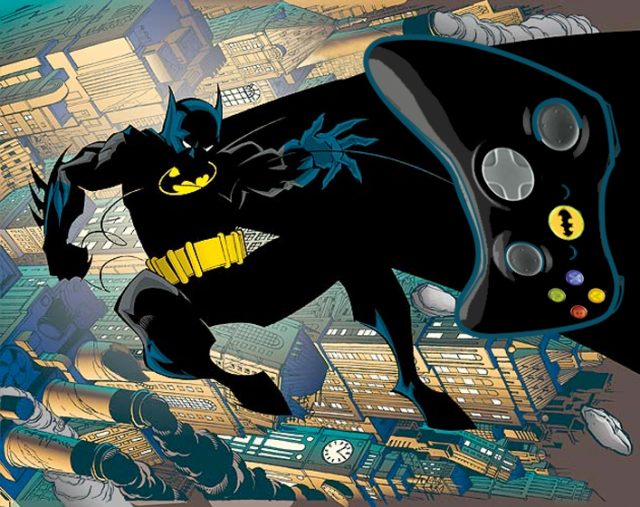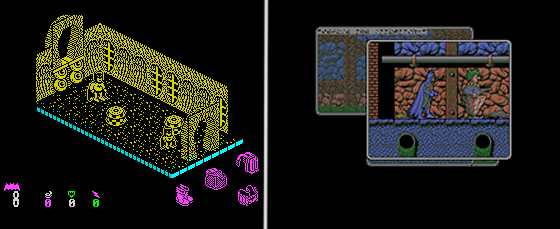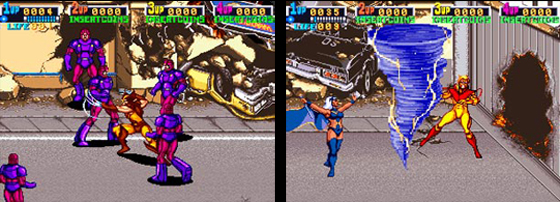Update: It's Christmas Eve and Ars staffers are enjoying a winter break (inevitably filled with Santa horror movies and ample video game time). As such, we're resurfacing a few favorites from the site archives touching on such topics—like this look at the intertwined lives of comic books and video games. This piece originally ran on November 25, 2008, and it appears unchanged below.
Growing up in the 1980s, video games and comic books were part of the regular media diet for America's youth. Despite the fact that comics and games often featured similar storylines and protagonists, there was very limited overlap between the two industries; games weren't yet advanced enough to compete with the rich art of the comic world. Witness: a Wolverine game in 2D, where the titular hero's main attack was a kick.
While comic and game companies had worked together sporadically, they started joining forces more often during our teen years, usually with mixed results that left both gamers and comic fans largely indifferent. But over the past ten years, thanks to a couple of major successes, things have really taken off between the two camps, and the masses have responded with an enthusiasm that has made publishers of both industries sit up and take notice.

Bringing comic characters into video games must have seemed like a no-brainer from the start. After all, what comic fan wouldnt salivate at the chance to take on the roles of their favorite superheroes? Comics and video games have been intertwined since the late 1970s, though games based on comics didnt really start to have a presence until the 80s. In the beginning, only major characters like Batman and Superman were considered viable candidates for appearing in video games. Superman made his first video game appearance on the Atari 2600 in 1979; he and Batman would go on to appear on early PCs and home consoles throughout the following decade.

These games were of varying quality, and home systems were unable to replicate the artistic styles that users had come to appreciate from comic pages. Aside from the technical challenges, one of the biggest contributors to lackluster game design was the fact that these titles were licensed, which most likely meant that developers couldn't be as creative as they would have liked. "The difficulty with any license in video games is trying to be innovative within the restraints of the license itself," said Joveth Gonzalez of Pink Kryptonite. "If you look at games in the 80s, the most innovative games came from creators that had full control over their characters and games. By using a license, one can only wonder how restrictive the licensor was being with the game developer."
Improvements in technology meant that games would eventually be able to adapt comic art a bit more faithfully, and these advancements were felt in the late 1980s. While home consoles were still rather primitive, who doesn't remember playing the X-Men arcade title on that huge six-person cabinet? While the translation was "interesting" at points (Magneto greeted the X-Men with the quote "Welcome to die!"), the gameplay looked and felt like the comics. The most popular X-Men were there, with powerful super attacks. It's hard to find a gamer or comic fan in their early 30s or older who doesn't have fond memories of this arcade machine.
Games based on popular comics started popping up for arcades and home consoles during the end of the decade: the Teenage Mutant Ninja Turtles cabinet games (based mainly on the cartoon show, but featuring many aesthetics from the original comics) were runaway hits in arcades, while other titles like Taicos Superman also managed to draw a respectable group of fans. Many more cheaply made comic-based games were still being released for consoles and computers, but cream rises; we remember the good games and lose the bad ones in memory.
"The movie theater by my house had both the six-player X-Men cabinet and the four-player Ninja Turtles machine," Ben Kuchera, Ars Technica's gaming editor (in 2008), recalls. "These games featured striking art, huge sprites, and satisfying attacks. For a comic book fan they were amazing; my friends and I dumped untold amounts of money into those slots. These games simply beat anything that was available on our home systems."

For the most part, crossovers between the two industries were pretty irregular throughout the 80's, but the groundwork was there, and turning great comics into good games really started to take off during the 90s. Of course, 2D Beat Em Ups were the rule of thumb, with a number of successes like Konamis X-Men game, the tie-in based on Michael Keatons Batman movie, and Cadillacs & Dinosaurs (based on the delightful indie comic Xeonzoic Tales) gobbling up quarters as fast as we could shove them into the coin slots.
However, as technology improved, comic games started to cross into other genres, and less mainstream series started to make appearances on game consoles and PCs in households across America. The premiere crossover? The beloved, but inevitably doomed, adventure genre.
[contf] [contfnew] 
Ars Technica
[contfnewc] [contfnewc]







